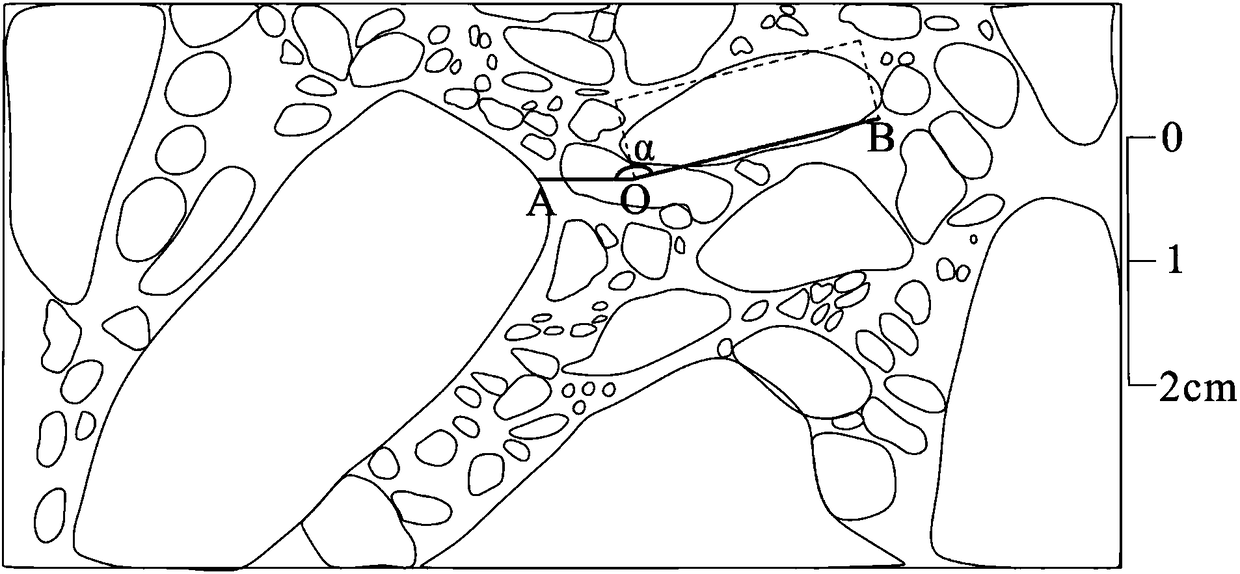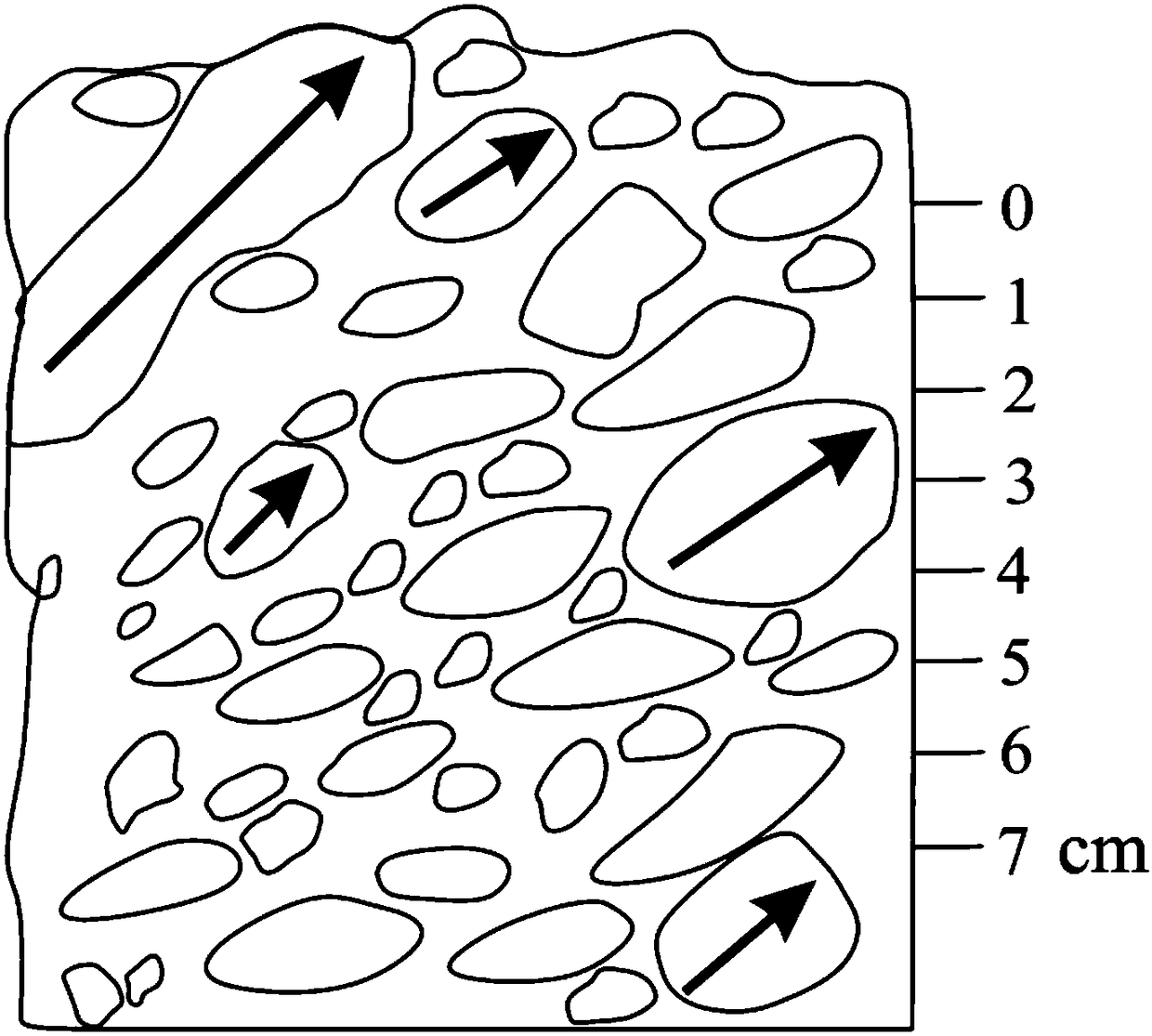Quantitative characterization method of gravel directionality in conglomerate core and application thereof
A quantitative characterization and directional technology, applied in special data processing applications, earthwork drilling, instruments, etc., can solve problems such as the inability to meet the fine description of conglomerate reservoirs, and the inability to finely classify sedimentary microfacies.
- Summary
- Abstract
- Description
- Claims
- Application Information
AI Technical Summary
Problems solved by technology
Method used
Image
Examples
Embodiment 1
[0050] The rationality research of embodiment 1 quantitative characterization
[0051] Take conglomerate core sample A and sample B, and the partial structure diagram of sample A is as follows Figure 10 As shown, the partial structure diagram of sample B is shown in Figure 12 shown. Characterize according to the quantitative characterization method of gravel orientation in the conglomerate rock core of the present invention, obtain the rose diagram respectively as follows Figure 11 and Figure 13 As shown, the calculated parameter a and parameter σ are shown in Table 1:
[0052] Table 1: Quantitative characterization results of sample A and sample B
[0053]
parameter a
parameter σ
Orientation level
Sample A
42
6
Obvious orientation
Sample B
42
3.2
certain orientation
[0054] Depend on Figure 11 and Figure 13 It can be seen that there is a certain difference in the orientation of sample A and sample B, ...
Embodiment 2
[0058] Example 2 Classification of gravel orientation in Mahu area
[0059] The Baikouquan Formation in the Mahu area is a sandy-gravel fan-delta sedimentary system, in which a large set of conglomerate was deposited. The sedimentary structure is complex and difficult to identify on the core.
[0060] This embodiment selects the coring data of well M152 in this area as the object of statistical analysis, for selecting 82 rock core samples (rock core photos), and counts the directional statistical parameters a and σ of the gravel in each rock core, as shown in Table 2 .
[0061] Table 2. Statistical table of gravel orientation parameters in Well M152
[0062]
[0063]
[0064]
[0065]
[0066] It can be seen from Table 2 that there is a certain relationship between the grade of gravel orientation and the lithofacies of conglomerate. The rock facies contains parallel bedding (p) and cross bedding (x), and the orientation is better, which means that there is obvio...
Embodiment 3
[0068] Application of embodiment 3 gravel orientation in sedimentary facies analysis
[0069] The study horizon in this example is the second member of the Baikouquan Formation of the Triassic system, which is a set of near-source glutenite-based sedimentary bodies. Well FN16 is located at the lower left edge of the Xiazijie fan in the Mahu Sag of the Junggar Basin, and the sampling site (2771.4-2768.3m) is located in the upper part of the Baier Member. Mainly; the sedimentary structure is mainly cross-bedding and massive bedding; the rock color is gray-green and gray; the support mode is mainly grain support and multi-level grain support, lithofacies type: G 4 xgg I, G 3 mgg I, G 4 xg II, G 5 xg II, G 5 xg I, G 2 xg I, G 3 mggI, G 3 mg I.
[0070] This time, 11 sampling points were selected for coring, quantitative research was carried out on the orientation of the gravel of 11 samples, and the values of the orientation parameters a and σ of the samples were calcu...
PUM
 Login to View More
Login to View More Abstract
Description
Claims
Application Information
 Login to View More
Login to View More - R&D
- Intellectual Property
- Life Sciences
- Materials
- Tech Scout
- Unparalleled Data Quality
- Higher Quality Content
- 60% Fewer Hallucinations
Browse by: Latest US Patents, China's latest patents, Technical Efficacy Thesaurus, Application Domain, Technology Topic, Popular Technical Reports.
© 2025 PatSnap. All rights reserved.Legal|Privacy policy|Modern Slavery Act Transparency Statement|Sitemap|About US| Contact US: help@patsnap.com



